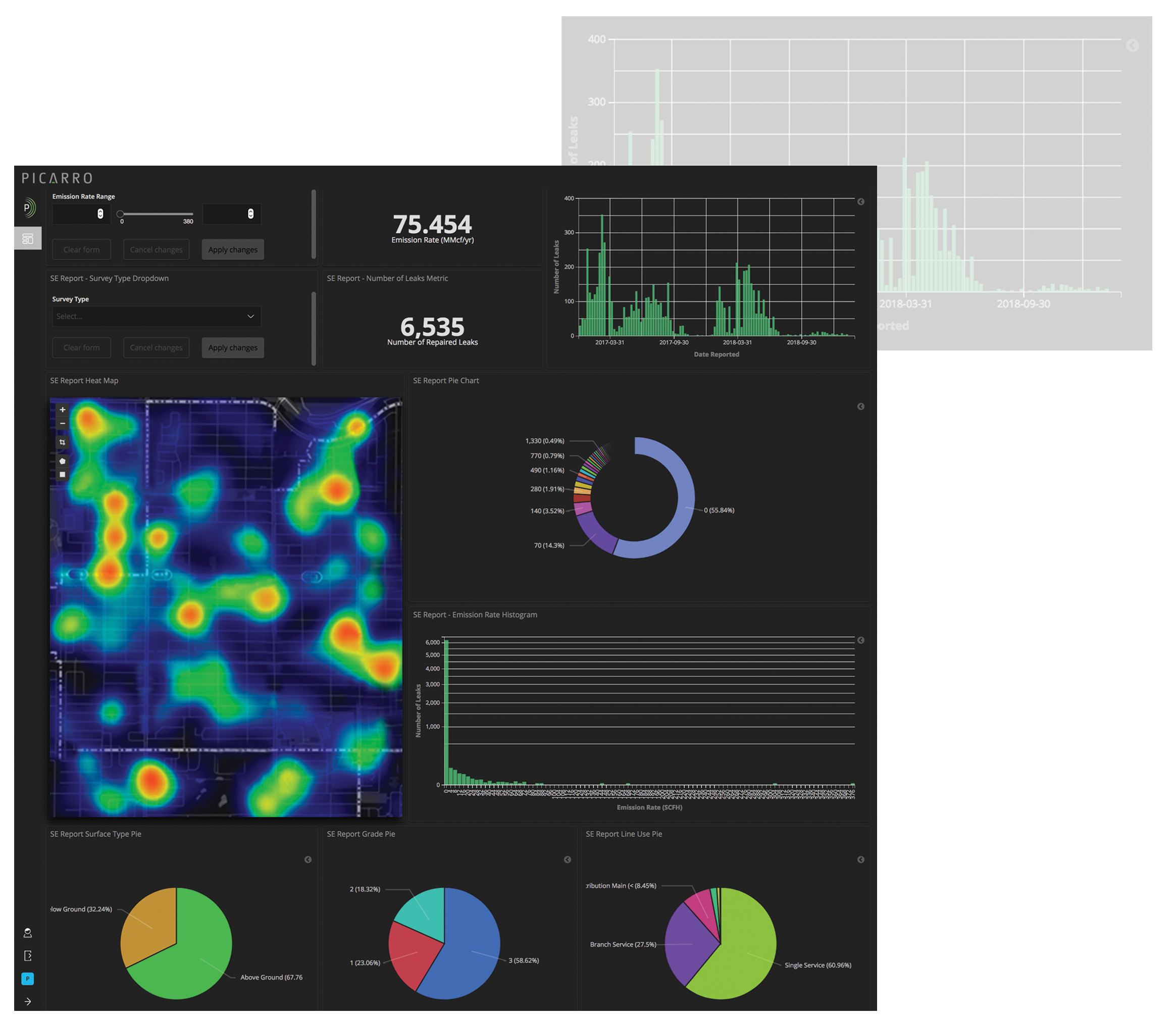Emissions Reduction

Finding and eliminating large leaks, also known as Super Emitters is the single most effective way to accomplish substantial emissions reductions. Picarro’s low-MDL (minimum detection limit) measurement solution allows you to quickly and effectively find super emitters at a speed and scale not previously available. These emissions reductions are designed, planned, managed and tracked through Picarro's Emissions360 solution. Combined with Picarro’s Network Assessment Viewer (NAV) which visualizes emissions data, you can target repair or replacement work and precisely quantify your emissions reduction. Utilizing Picarro’s solution allows utilities to measure, reduce, and report on their efforts to reduce fugitive methane emissions.
Utilities have a regulatory and public-service responsibility to operate their networks safely and reduce emissions. Traditional survey and repair methods create large leak backlogs, and potentially high-emitting leaks that may not be detected for months or even years.
Picarro can rapidly scan a natural gas utility network, at scale, to identify leaks and measure the associated fugitive emissions. Large emitters, which frequently contribute disproportionately to total network emissions, can be easily identified so they are remediated first as part of an informed and cost-effective emission reduction strategy.
- Picarro is being utilized globally by utilities as the basis of their methane emissions abatement protocols and programs.
- Emissions data measured along a pipeline that is ultimately replaced can be used as a proof point to regulators of exactly how much methane (and how many estimated leaks) were remediated through pipe replacement.
- Emissions measurements help utilities provide irrefutable evidence of achieving emissions reduction targets.
- For large-area emissions quantification, individual leak indications are not produced that would trigger a duty to investigate.
- For identifying high-emitting leaks, only leaks above targeted thresholds are flagged for investigation.

